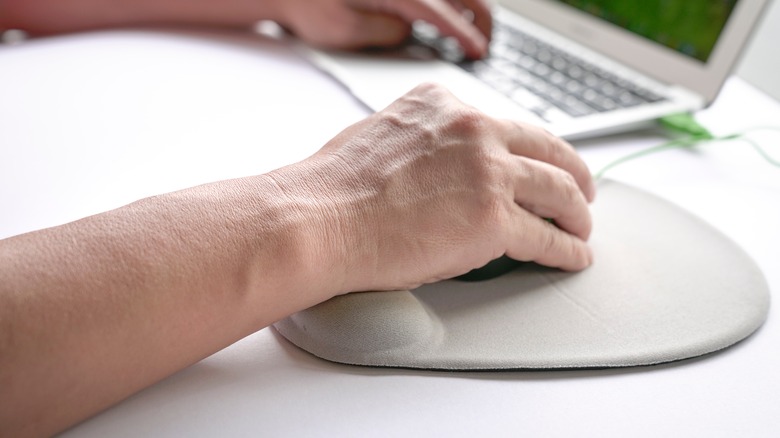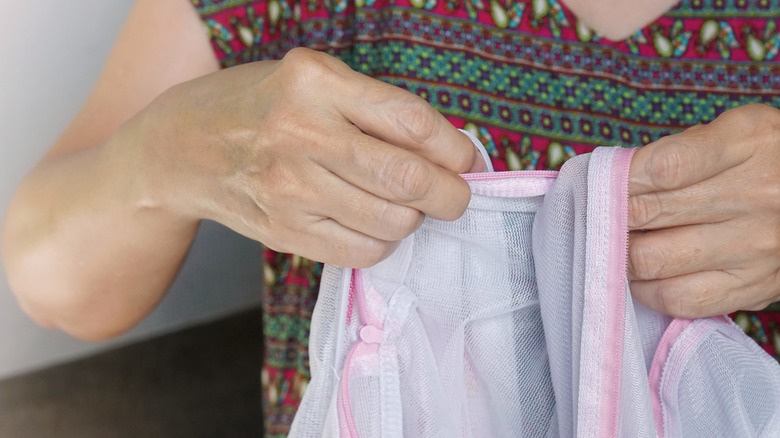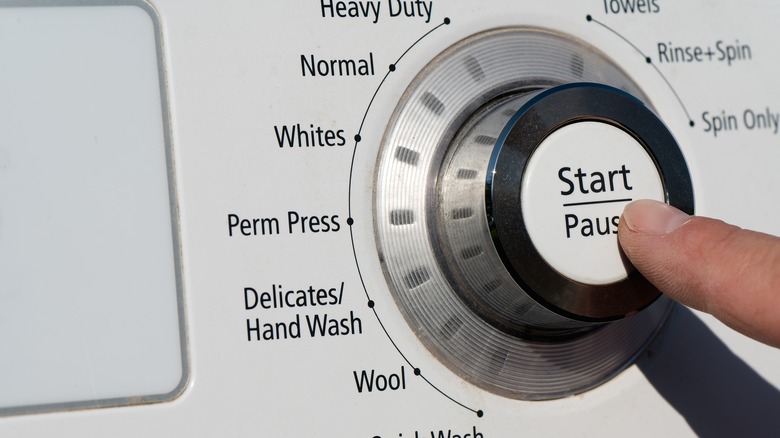Cleaning Your Germy Mousepad Just Got Easier With This Helpful Tip
We may receive a commission on purchases made from links.
Mousepads are a haven for dirt and dust; like the computer mouse itself, keeping them clean is a struggle. Sure, the pads are cheap, but since they're usually made from synthetic materials, buying new ones regularly isn't a very environmentally friendly option. A mousepad probably isn't on your list of things you can clean in your washing machine, but while experts are conflicted on the matter, the general consensus seems to indicate that it is okay to machine-wash certain mousepads as long as you adhere to strict instructions.
According to the software experts at SelectHub, a mousepad can be machine-washed if it's made from bendy materials and fabrics, including polyester, nylon, microfiber, foam, acrylic, rubber, polyurethane, or acetate (obviously, you can't throw one of the newer hard glass or metal mousepads in the washing machine!). It's just as well, since these materials have varying degrees of porosity; they soak up grime, sweat (bleurgh), and anything spilled on them. Morning coffee, anyone? As a general rule, the rubber backing on flexible mousepad materials doesn't hold up well in hot, rough, sudsy waters, so you need to use a laundry bag, wash on a delicate cycle, and use a low-sud, chemical-free cleaning agent.
Treat stubborn stains first
You'll need to treat noticeable stains before popping the pad into your machine. Use a gentle formulation spray-on stain remover or a liquid you can apply with a soft cloth. For example, Honest sells a 16-fluid-ounce bottle of hypoallergenic baby stain remover derived from plant materials for $6.99, at the time of writing. Avoid products with a built-in brush as scrubbing is only going to damage the surface of your mousepad. Leave the stain remover on for as long as the manufacturer recommends, or even a shorter length of time to be extra safe, and rinse off with cold water.
Pop the mousepad inside a small mesh laundry bag. You can pick up a set of five on Amazon for just $7.99 or a set of two from Walmart for $8.62. This will allow the water and soap to reach the pad while protecting it from the insides of the washing machine. Extreme suds are bad for mousepad material, as are cleaning agents containing detergent or harsh chemicals like bleach. They deteriorate the adhesive (glue) that attaches the top layer of the pad to its slip-proof backing and can ruin the surface of the pad, which will prevent your mouse from working properly. Instead, use a detergent-free, low-sud option like Grandma's Non-Detergent Laundry Soap, $52.00 for a 10-pound bag, or the crunchy household classic Dr. Bronner's All-One Pure Castille Liquid Soap (peppermint), $16.99 for a 32-ounce bottle. Bonus: Use these gentle laundry soaps for your regular wash and get more wear from your clothes, towels, and bedsheets.
Wash and dry gently
Use your washing machine's delicate setting and wash in cold (never hot or warm) water. If you're washing the mousepad on its own, set the machine to the lowest water level. Once washed, remove the pad from the machine, wrap it in a clean towel, and gently press out the water. Never wring it out or put it in the tumble dryer. Instead, lay it flat to dry outside slowly — an OXO sweater drying rack, $18.99 from Home Depot, or Walmart's mesh clothes dryer for $36.20 work great. Set it up in a cool, shady spot, remembering that UV rays deteriorate plastics. Do not iron your mousepad. It will negatively impact the traction and potentially melt the adhesive.
Ensure the mousepad is completely dry before using it — electronic devices and water rarely mix well. Plus, a moist mousepad is sure to feel gross on your hand. Do you need to machine-wash your mousepad as often as you clean your computer mouse and keyboard — that is, once a week? You could, but that may reduce its longevity. Instead, aim for a thorough clean every two months, wiping it down with a damp cloth every week or so. While washing a mousepad in the washing machine is usually fine if it's made from any of the materials mentioned here, some brands specifically state their products are hand-washable only. In those cases, defer to the manufacturer's instructions on cleaning and care.


